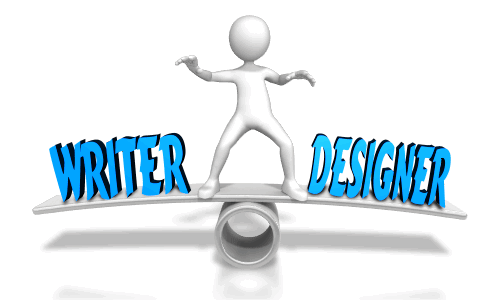When you
are a technical writer or an instruction designer your key skill is
collaboration. The extent of collaboration through the creation process is what
makes these unique professions. The writer/designer has the software, technical
and communication skills to create a final product, but it is their
collaboration with the subject matter experts (or SMEs) that makes or breaks
the quality of the final product.
Software
developers and business people know their jobs and what they do, the
writer/designer depends on these subject matter experts (SMEs) for the content
that needs to be “translated” from technical jargon to something the layperson
can understand.
.gif)
When collaborating on any size project(from a single document or a set for an entire release) communication is a skill every member of the team need to use. When working with co-workers or team members, it is important to remembercollaboration is about creating a final product.
Collaboration is not about competition. Even though a writer/designer may be brought in as a consultant to create the document or training, they work as a team, with the company and keep the good of the project (and of the company) a priority. Being part of this team team allows you to learn from as well as to teach others. Collaborating on a project yields many benefits as well as challenges to the writing/designing process.
Collaboration also produces well rounded and effective products and it allows the participants to learn about other people in the organization that can contribute their expertise in future projects that may not even relate to the subject at hand.
Good writers or designers become great writers through collaboration and discovering new ways to
improve their writing process. In addition, by collaborating with subject matter experts, designers, and publicists, technical writers quickly learn about other fields and the ways writing impacts various disciplines.
Collaborating on a project with a team provides many benefits not only to the success of the deliverable, but it aids the team members to grow professionally.
.gif)
When collaborating on any size project(from a single document or a set for an entire release) communication is a skill every member of the team need to use. When working with co-workers or team members, it is important to remembercollaboration is about creating a final product.
Collaboration is not about competition. Even though a writer/designer may be brought in as a consultant to create the document or training, they work as a team, with the company and keep the good of the project (and of the company) a priority. Being part of this team team allows you to learn from as well as to teach others. Collaborating on a project yields many benefits as well as challenges to the writing/designing process.
Collaboration also produces well rounded and effective products and it allows the participants to learn about other people in the organization that can contribute their expertise in future projects that may not even relate to the subject at hand.
Good writers or designers become great writers through collaboration and discovering new ways to
improve their writing process. In addition, by collaborating with subject matter experts, designers, and publicists, technical writers quickly learn about other fields and the ways writing impacts various disciplines.
Collaborating on a project with a team provides many benefits not only to the success of the deliverable, but it aids the team members to grow professionally.




